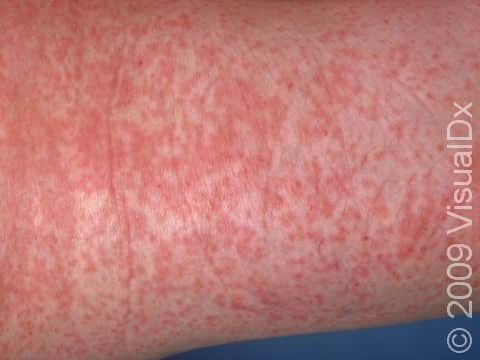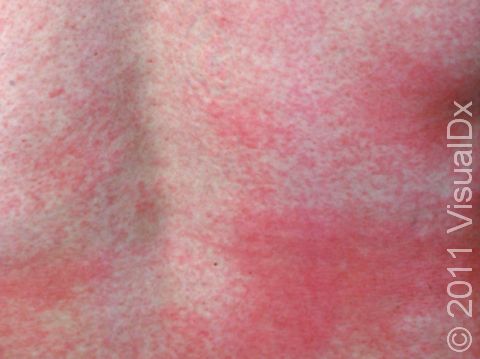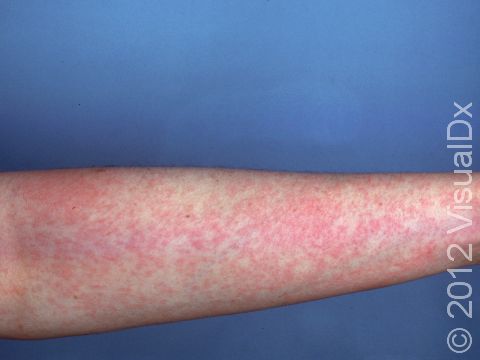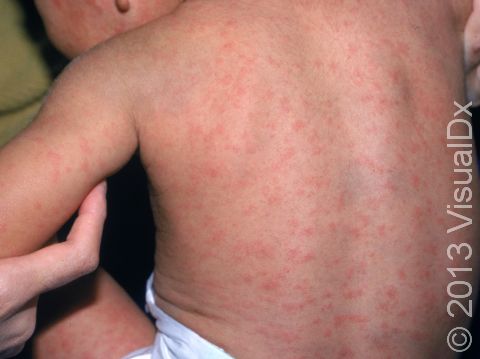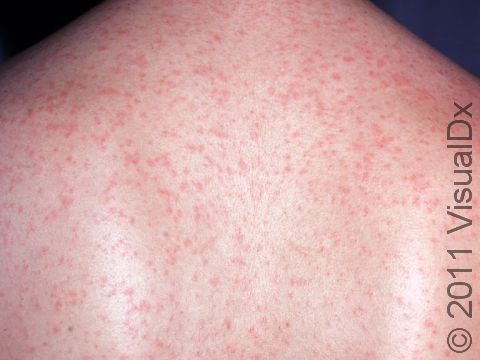Rubella (German Measles)
Rubella, sometimes called German measles, is caused by the rubella virus and spreads through contact with fluids from the respiratory tract, such as during coughing and sneezing. Following infection, it takes 14-21 days for the first symptoms to start, including respiratory symptoms, headache, fever, and feeling irritable and tired. A rash then appears 1-7 days later.
Rubella occurs more commonly in the spring and summer months. Even in a person with a weak immune system, rubella is usually a mild illness. However, if a pregnant person becomes infected, rubella can cause severe damage to the unborn baby.
Who's At Risk?
Rubella is rare in the United States due to required vaccination, usually given twice to a child before they start attending school. There is a higher incidence of rubella in people who are in crowded or confined areas, such as schools and military bases. Most infections seen in the United States occur in young adults who are not vaccinated. Rubella is commonly seen in disadvantaged people, migrant workers, and new immigrants.
Signs & Symptoms
- The child may be irritable, fatigued, and may have a headache, fever, and minor respiratory symptoms. Then, 1-7 days later, the rash often appears. Lymph nodes in the neck and elsewhere in the body may become swollen.
- The rash appears as pink or red macules (small, flat, smooth areas) and papules (small, solid bumps), often first appearing on the face. Within a day, the rash fades from the face and spreads to the trunk, arms, and legs. The macules on the trunk will merge but will appear as distinct lesions on the extremities. As many as 25% of people with rubella have no rash, though.
- In darker skin colors, the rash may be harder to see; it maybe easier to feel the papules than see them. The rash may also have a purplish color.
- The rash may itch, and then it typically goes away in about 3 days. Skin peeling often occurs later in the areas where the rash was.
- The child will be contagious from a week before their symptoms start to a week after the rash appears.
Self-Care Guidelines
Rubella is generally a mild illness, and the child can be cared for at home.
- To relieve discomfort and fever, give the child acetaminophen (Children’s Tylenol) or ibuprofen (Children’s Motrin).
- Anyone with rubella should try to avoid contact with pregnant individuals. If there is contact, the pregnant person should call their medical professional for advice.
Treatments
The medical professional may perform tests to confirm the diagnosis of rubella. Once confirmed, the medical professional may recommend treatment of associated symptoms, such as controlling fever.
Visit Urgency
If your child has a fever over 102°F (38.9°C) or appears very ill, call their medical professional.
Trusted Links
References
Bolognia J, Schaffer JV, Cerroni L. Dermatology. 4th ed. Philadelphia, PA: Elsevier; 2018.
James WD, Elston D, Treat JR, Rosenbach MA. Andrew’s Diseases of the Skin. 13th ed. Philadelphia, PA: Elsevier; 2019.
Kang S, Amagai M, Bruckner AL, et al. Fitzpatrick’s Dermatology. 9th ed. New York, NY: McGraw-Hill Education; 2019.
Paller A, Mancini A. Paller and Mancini: Hurwitz Clinical Pediatric Dermatology. 6th ed. St. Louis, MO: Elsevier; 2022.
Last modified on June 18th, 2024 at 1:43 pm

Not sure what to look for?
Try our new Rash and Skin Condition Finder
